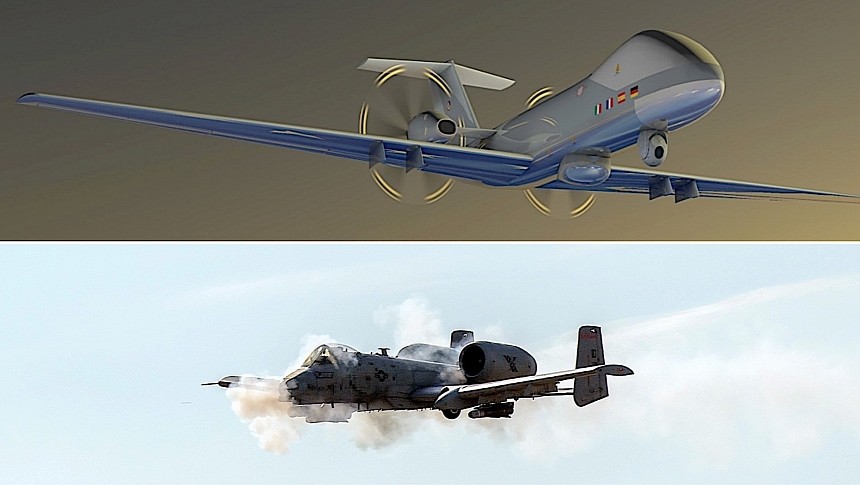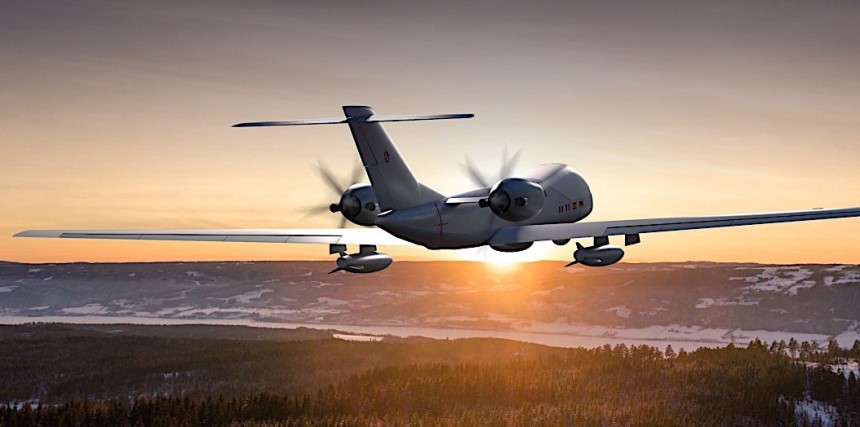There are a lot of fearsome military aircraft flying under the colors of the Star-Spangled Banner, with the most modern fifth-generation fighter aircraft leading the pack in terms of capabilities, reach, and punch. But none of the pieces of hardware in America's flying arsenal comes even close to the A-10 Thunderbolt II in terms of scare factor.
The A-10 has been around since the mid-1970s and is the only plane the U.S. Air Force is flying for close air support operations of ground troops. And it's more than equipped for the task, packing a variety of weaponry that includes the mighty, nose-mounted Gatling gun.
It's ugly, too. So ugly that not only its sight can scare some enemies away, but it was nicknamed by friendly forces the Warthog. And it's impossible to mistake the thing for something else, thanks to the blunt nose, the two, large vertical stabilizers mounted at the tips of the horizontal stabilizers, and the two General Electric turbofan engines mounted aft of the wings.
Now that you've created a mental picture of the Warthog, look at the Eurodrone we have here and imagine its exact features are not clearly distinguishable. Is it me, or does it look like an overgrown Warthog?
The A-10 has a wingspan of 57 feet and 6 inches (17.42 meters). It's 53 feet (16 meters) long and 14 feet (4.4 meters) high. By comparison, the Eurodrone will be slightly shorter, at 52 feet (16 meters) long, but taller, at 19 feet (6 meters). It will have a huge wingspan of 98 feet (30 meters).
The machine is an ongoing project between Germany, France, Italy and Spain, led by Airbus. It aims to create, by the end of the decade, the continent's first true Intelligence, Surveillance and Reconnaissance (ISR) drone that can fly missions in the same airspace as other aircraft.
The hardware will be equipped with two General Electric turboprop engines installed on the main fuselage, behind the main wings - a rather strange configuration, that makes it look a lot like the A-10. They'll be able to push the aircraft to speeds of 310 mph (500 kph), and for flight times that can be as long as 40 hours.
The parties involved in the project announced this week one of the major parts suppliers for the Eurodrone. French company Safran will supply the wheels and brakes of the aircraft, but also the hydro-mechanical equipment and braking control module. The electro-optical system for the Eurodrone will also be made by Safran.
The production of the first prototype is expected to begin next year. The four European countries plan to fly it for the first time in 2027, with an operational introduction expected in a year after that.
It's ugly, too. So ugly that not only its sight can scare some enemies away, but it was nicknamed by friendly forces the Warthog. And it's impossible to mistake the thing for something else, thanks to the blunt nose, the two, large vertical stabilizers mounted at the tips of the horizontal stabilizers, and the two General Electric turbofan engines mounted aft of the wings.
Now that you've created a mental picture of the Warthog, look at the Eurodrone we have here and imagine its exact features are not clearly distinguishable. Is it me, or does it look like an overgrown Warthog?
The A-10 has a wingspan of 57 feet and 6 inches (17.42 meters). It's 53 feet (16 meters) long and 14 feet (4.4 meters) high. By comparison, the Eurodrone will be slightly shorter, at 52 feet (16 meters) long, but taller, at 19 feet (6 meters). It will have a huge wingspan of 98 feet (30 meters).
The hardware will be equipped with two General Electric turboprop engines installed on the main fuselage, behind the main wings - a rather strange configuration, that makes it look a lot like the A-10. They'll be able to push the aircraft to speeds of 310 mph (500 kph), and for flight times that can be as long as 40 hours.
The parties involved in the project announced this week one of the major parts suppliers for the Eurodrone. French company Safran will supply the wheels and brakes of the aircraft, but also the hydro-mechanical equipment and braking control module. The electro-optical system for the Eurodrone will also be made by Safran.
The production of the first prototype is expected to begin next year. The four European countries plan to fly it for the first time in 2027, with an operational introduction expected in a year after that.







